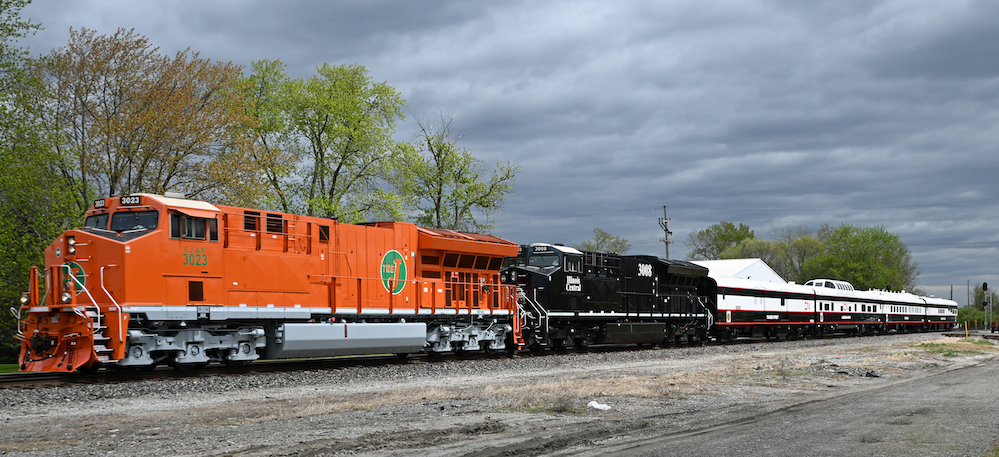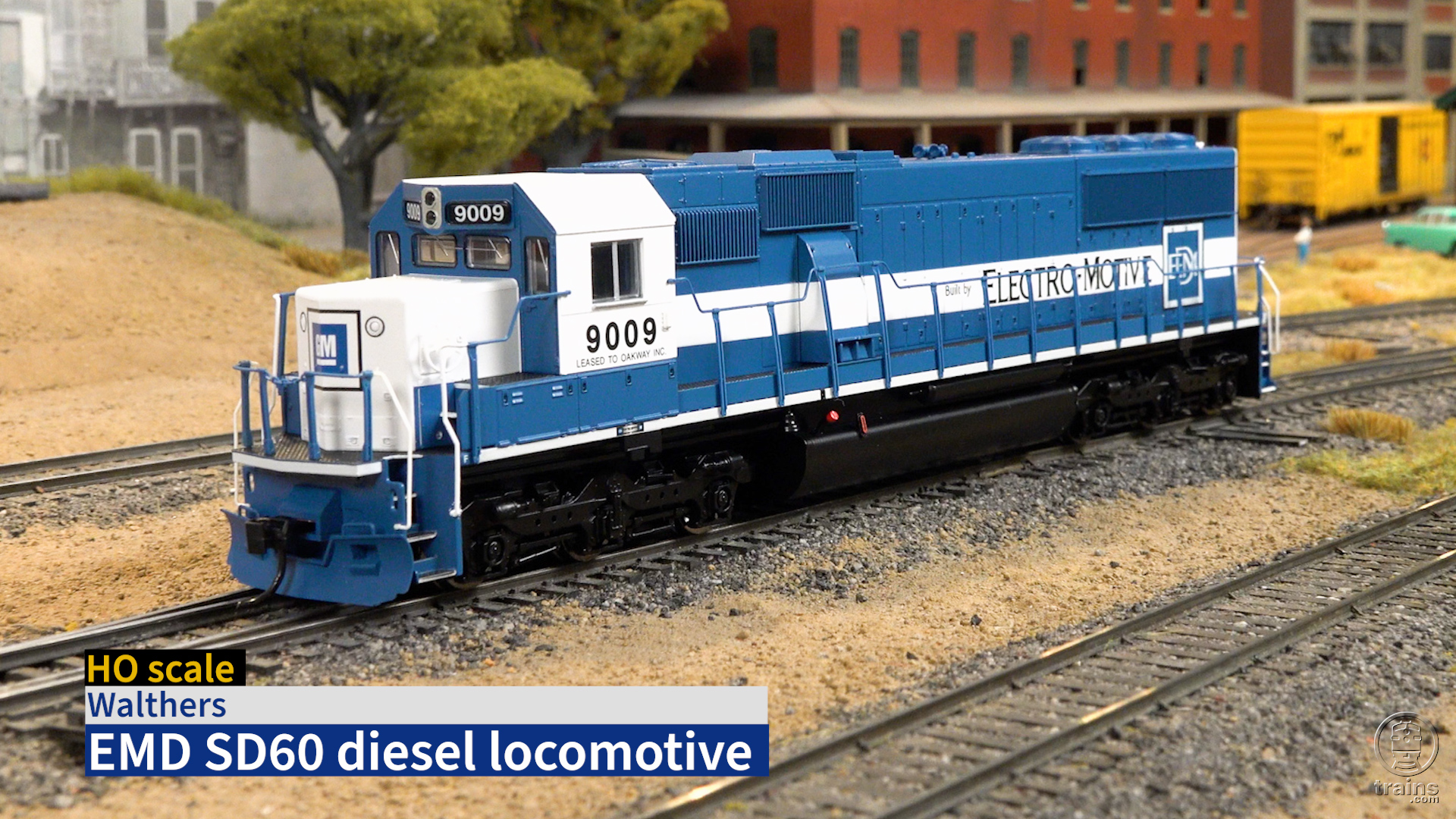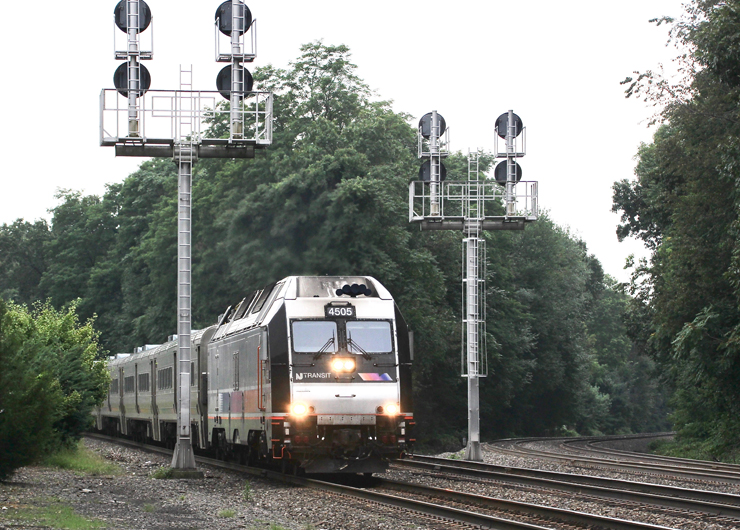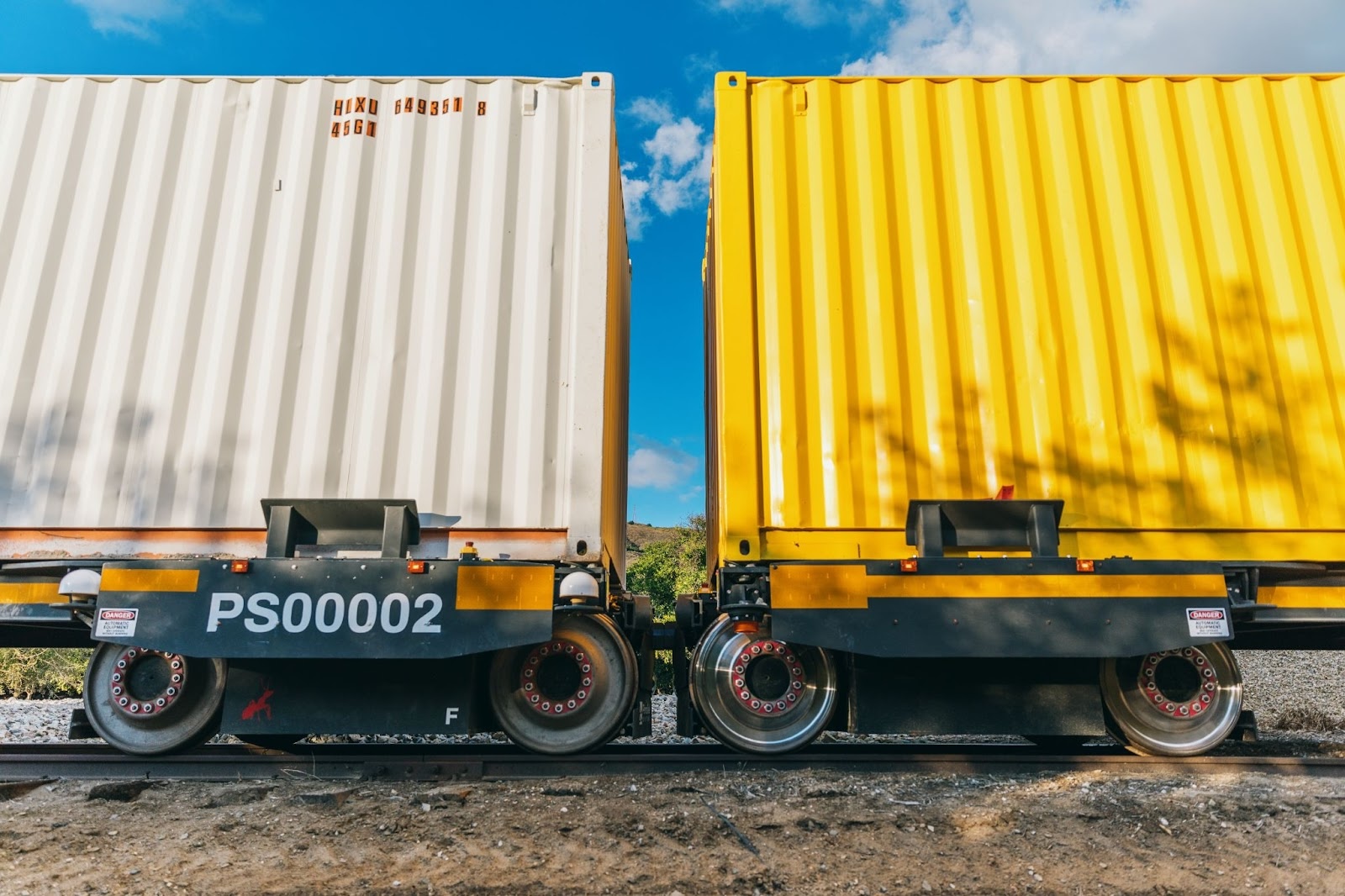
CHICAGO — Canadian National executives on Wednesday dissected the long-train strategy that the railway has cast aside in favor of an operating plan where sticking to schedule is gospel.
“The plan is sacred” was a phrase CN officials used multiple times during the railway’s investor day presentations.
“You have this phrase around here … ‘the plan is sacred.’ And in this railroad in the past number of years we moved away from this kind of a plan and we moved more toward a long train strategy in the search of what I’m told is a different kind of efficiency,” CEO Tracy Robinson says. “My belief is a scheduled plan is the right one for us. Let me tell you why.”

Robinson, who became CEO on Feb. 28, 2022, then launched into an explanation of the differences between the old and new operating plans:
“CN is a single-line network. Imagine that you’re an operations manager and you’re in a yard. You’re about to depart a train, say it’s 7,000 feet, it’s going to depart at two o’clock, 1400. If you’re in a long-train model, you’re looking at your inbound lineup, and you may see two, three thousand feet coming into that yard over the next number of hours that could go on that outbound train. And you want the longest train possible. So what you’re going to do is delay that departure, you’re going to wait until that traffic comes in, you’re going to marshal it up and you’re going to send out a 10,000-foot train,” she says.
The problem with holding for tonnage?
“No one knows when that train is leaving across the network. No one knows when it’s going to get to the next yard. What you’ve just done is you’ve optimized for that terminal, for your yard, and for that train,” Robinson explains. “If you’re running a scheduled operating model, that train departs at two o’clock, 1400, at 7,000 feet. It does that because that power is expected in the next terminal to be turned and put on another train. And those cars are planned for connections so they can get to the customer. And what you’re doing in that model is you’re running a much more consistent level of customer service and you’re optimizing not to the yard but you’re optimizing to the network. And so you’re going to get more asset velocity, more consistent utilization of power and crews, and more predictable service.”
On-time train departures improved to 87% for the year to date, up from 79% last year, while on-time arrivals are 73% this year, up from 61% last year. The goal now is to shrink the gap between origin and destination performance.
“Yesterday we launched trains at 94% on time. We landed trains at 86% on time,” says Derek Taylor, senior vice president of transportation. “Our goal in that process of launch versus land is to squeeze that delta as tight as we possibly can so that we are landing as close to what we launched as possible, getting trains across the railroad.”
Average train speed is up 8% for the year to date compared to 2019, while terminal dwell has improved by 10%. The local service commitment plan, which measures delivery of the right cars to a customer during the specified time window, is 88% so far this year compared to 80% last year.
“A critical component of the turnaround was the focus on speed and velocity versus train load and train length,” says Patrick Whitehead, senior vice president of network operations. “Accumulating inventory to run big trains in our terminals was delaying traffic and gave us the appearance that we were short of people and in some cases locomotives in certain corridors. The slower network train speed was driving that perceived shortage. We just needed to speed the network up. As we sped the network up and stuck to the disciplined scheduled operating plan, we could more accurately predict the actual resources we need and plan accordingly.”
Last year, as part of the scheduled plan it began implementing on April 1, CN also ended the practice of running trains over siding length. In Western Canada, CN’s sidings are built to handle 12,000-foot trains.

“We started with ‘Just start the trains on time. Please,’” Chief Operating Officer Ed Harris says. “That was the first step. And don’t run anything longer than siding length. You go out there and run long trains and you don’t fit in the siding, what happens? You start holding trains back 10, 12, 15 miles waiting for a meet. Can’t do that. Every stopped train costs this company money, costs us in customer service, costs us in our relationships with our customers.”
Just don’t call this Precision Scheduled Railroading.
“Tracy and I never talk about PSR. That’s not in our vocabulary. I don’t even acknowledge PSR,” Harris says. “What we do is run a scheduled operation based on the car, with a strong level of safety and a strong level of commitment to our customers. The car is the driving mechanism. The velocity of that operation is what makes this thing hum.
“I don’t talk about precision scheduled anything,” Harris adds. “I talk about car velocity. I talk about train speed. I talk about customer service. I talk about the spotting plan. I talk about the scheduled service. I talk about how we take the bulk trains and feed ’em in between the scheduled trains out of Edmonton going to the ports. It’s all part of the plan.”
To accommodate anticipated growth over the next three years, CN has planned siding extensions and new stretches of double track west of Edmonton, Alberta, where the railway funnels traffic to and from the ports of Vancouver and Prince Rupert, British Columbia. CN also will add a new siding on the Montreal-Halifax, Nova Scotia, corridor, where CN last year added a second intermodal train pair to handle record container volumes from the port of Halifax.














Oh my gosh , they are actually going to do it, operating on time. Please do it successfully, maybe the “disease” will spread(death of PSR).
Now walk the talk CN. I’ve heard the same since Harrison arrived in 1999.
Whenever clever management would question the cult of the low OR, they would soon be replaced under pressure from activist investors, and another round of savage cost-cutting and gutting would begin.
When IC took CN over in 1999 (operationally, that is, not financially), aggressive infrastructure cutbacks, locomotive pruning, and employee firing began even before operating changes had even started.
When the changes came, customers who were switched 5 days a week ended up being switched once or twice, and then embargoed because CN was delivering two many cars for their sidings to handle. When they were not derailing because they were poorly marshalled or infrastructure crumbled under the excessive forces, trains started dying on main lines and cars were purposefully misrouted to keep yard dwell time low. Each trainmaster and superintendent wanted to show good-looking numbers to head of operations, or would face “promotion” to a dreadful, remote northern Ontario terminal.
CN is not a growth success story, nearly all its lines and terminals handle far less business than they used to 20 years ago, save maybe for west coast terminals. Expansion in the Prince Rupert – Chicago corridor and purchase of regional railroads may have skewed the numbers to show a growth, but look trackside, and talk to customers and employees, you’ll see a different story.
Some of these regional railroads have since been totally bled-out of their traffic (BC Rail, Algoma Central, Ottawa Central, New Brunswick East Coast and most of WC’s network of local branches).
As I said, walk the talk now CN. But even if you do, you’ll probably back down on it when your stock fluctuates too low. Or until the industry gets re-regulated, which may be PSR’s most lasting impact.
This is good news. The CN mainline a few miles from my home has been running some decent-sized trains, but nothing over-sized.
The old way was plenty of trouble. Trains getting “dog-catched” and being tied down on passing tracks to await a new crew. No way to run a railroad. I think CN will do well with this common-sense strategy and I wish them well.
I have observed and read many articles and opinions over the last number of years regarding the virtues of PSR and I have to conclude while the theory makes sense, the implementation and execution in reality has been an utter disaster. The imperative value of running a “scheduled” operation has many positive attributes that makes the concept outstanding.
If one is running on a schedule, one can then schedule the crews with advanced knowledge of their call time; likely allowing for a more motivated workforce, locomotive maintenance can be added into the mix allowing for a more precise allocation of those support resources, power distribution is more predictable for the outgoing flow of traffic and ultimately it allows for a smoother, safer and more sane operation that ultimately allows the end user / customer a better understanding of when their much needed goods arrive at destination, thus driving more customer satisfaction.
Unfortunately, when PSR was assaulted with the notion of lower operating ratio; the model became a fallacy. Look at UP with their emphasis to run 15,000 foot trains on lines with only 10,000 foot passing sidings. This has nothing to do with PSR, it is OR driven.
AMTRAK is currently filing actions against UP for the impacts to AMTRAK’s operations because the faster passenger trains can’t get around the much slower and longer freight trains due to lack of adequate passing sidings. Opposing trains of similar lengths are held up for the same reason. The lack of fluidity then cascades into crews going pumpkin and needing relief, then cascading into not enough available crews resulting in the need to embargo traffic, thus impacting the end point user and now bringing in regulatory oversight.
Want to fix the fluidity and crew issues, start running on a schedule. Airlines have figured it out. Airlines have to have crews, planes, support elements working very timely to maintain fluidity. Not much different a concept for railroads either.
Want your balance sheets to look better, stop turning your customers away to other modes of conveyance. Customers will flock to your product if you provide value. As commenters above have said, there is a lot of low hanging fruit that can be easily harvested which means more revenue.
Hopefully, CN and CSX will prove that running a scheduled operation will ultimately lower the operating cost and expand the customer base (more revenue) by providing a quality service. Operating costs will lower because of the removal of the added costs due to these poor practices.
Poor management practices are the culpret of this issue, The decision of not running on a schedule but running based on tonnage (OR) destroys the ability to maintain overall fluidity of the system, infrastructure and various support elements.
Finally someone got the memo. Conrail did that decades ago. The pool I worked you could predict within a couple of hours when the trains were going to run and what train you were going to get. The customers were happy. Train crews were happy. And Conrail made tons of money.
Rail volume in the US is steadily falling month over month and year over year. Short sighted management in the 80’s and 90’s and PSR recently are the main causes. Maybe we’ll see some sort of turnaround to get more freight of the highway. An endless line of big rigs between Mobile and Nashville today on I-65 north and southbound. Probably half hauling containers. Low hanging fruit and the railroads can’t pick it.
A man named Moyer butchered the IC’s great 100mph speedway before CN had control. In December 1964 I was riding in the observation car on the “real City of New Orleans” and I asked the conductor when we would be doing 100mph. He pulled his Hamilton, checked with a few mile posts and he said “we’re doing it now”.
‘’
I only read the beginning. Stopped when I read the statement CN is mostly single track.
The former IC used to be a high speed double track high speed railroad. Imagine if CN kept the second main and having a two main track ctc railroad now. That would have been cool.
It would have required quite a ouija board. That IC died when Wayne Johnston, longtime IC president (1945-1966), retired. The road went through diversification (creating a holding company, IC Industries, to enhance earnings), divestiture (merging with GM&O and selling off redundant lines), and finally disolutionment (spinning off the slimmed- down railroad from the parent company). Truth is, some of this was necessary. The IC/ICG was an old, over-built railroad that needed to be modernized. Had that been done sooner, more of that double track and network might have survived.
The Reading had the opposite problem at Rutherford (Harrisburg.) A symbol freight was being made up but it was light for the road power. A trainmaster ordered it be filled out with coal. The conductor noted there was a speed limit on coal that would put the symbol freight behind schedule. The TM said it was “fast coal.”
Now that’s the real PSR model!
Wonder if it includes passenger trains???
Can this be…
A return to sanity? The trouble with the cult of the OR/PSR is you eventually reach zero, as in no revenue.
I want to see what their re-costs do in the next few months.
And to look at one tiny grain of sand on the vast beach of CN operations, I bet VIA 1 and 2 are running closer to schedule or ahead of it.